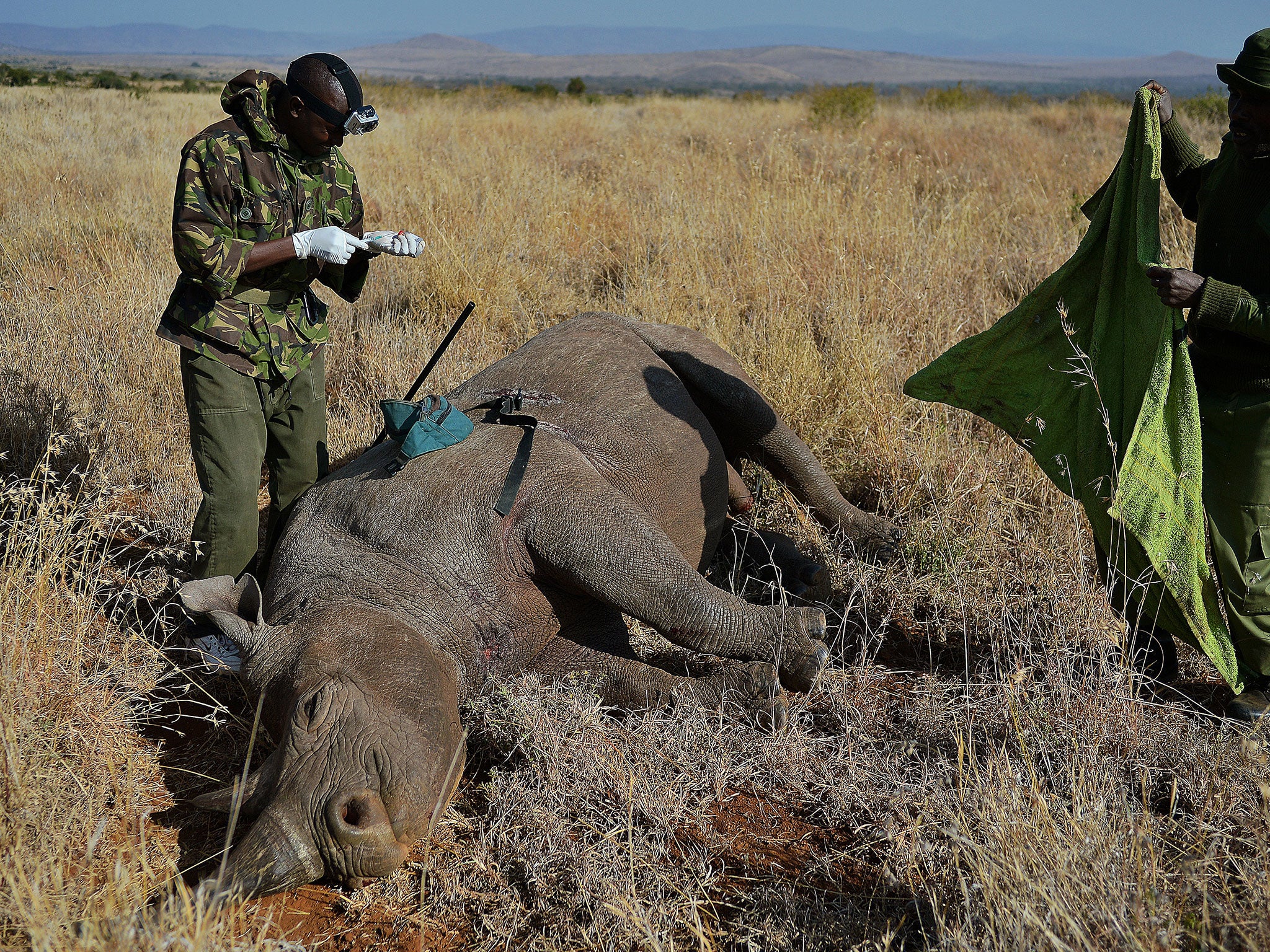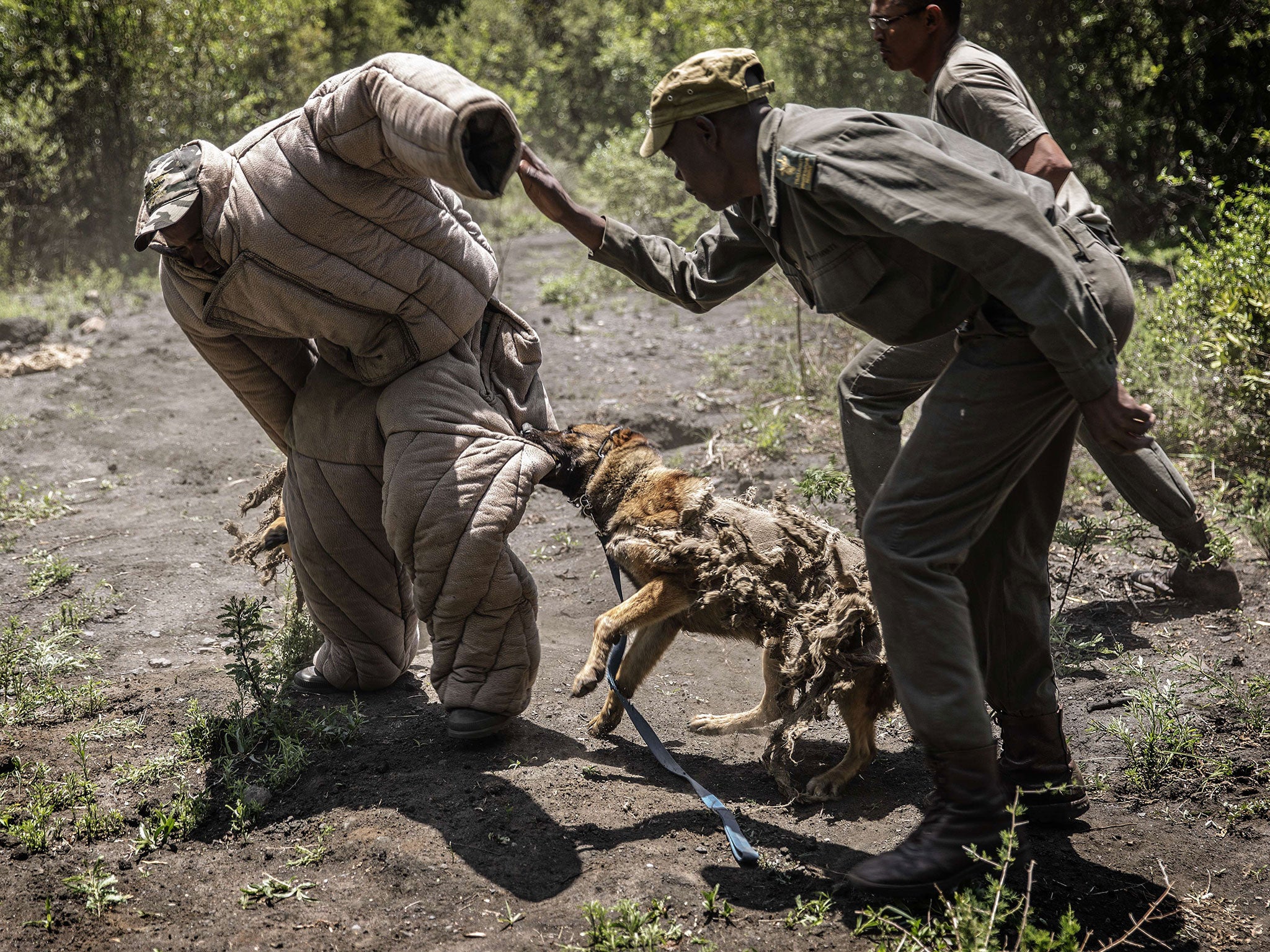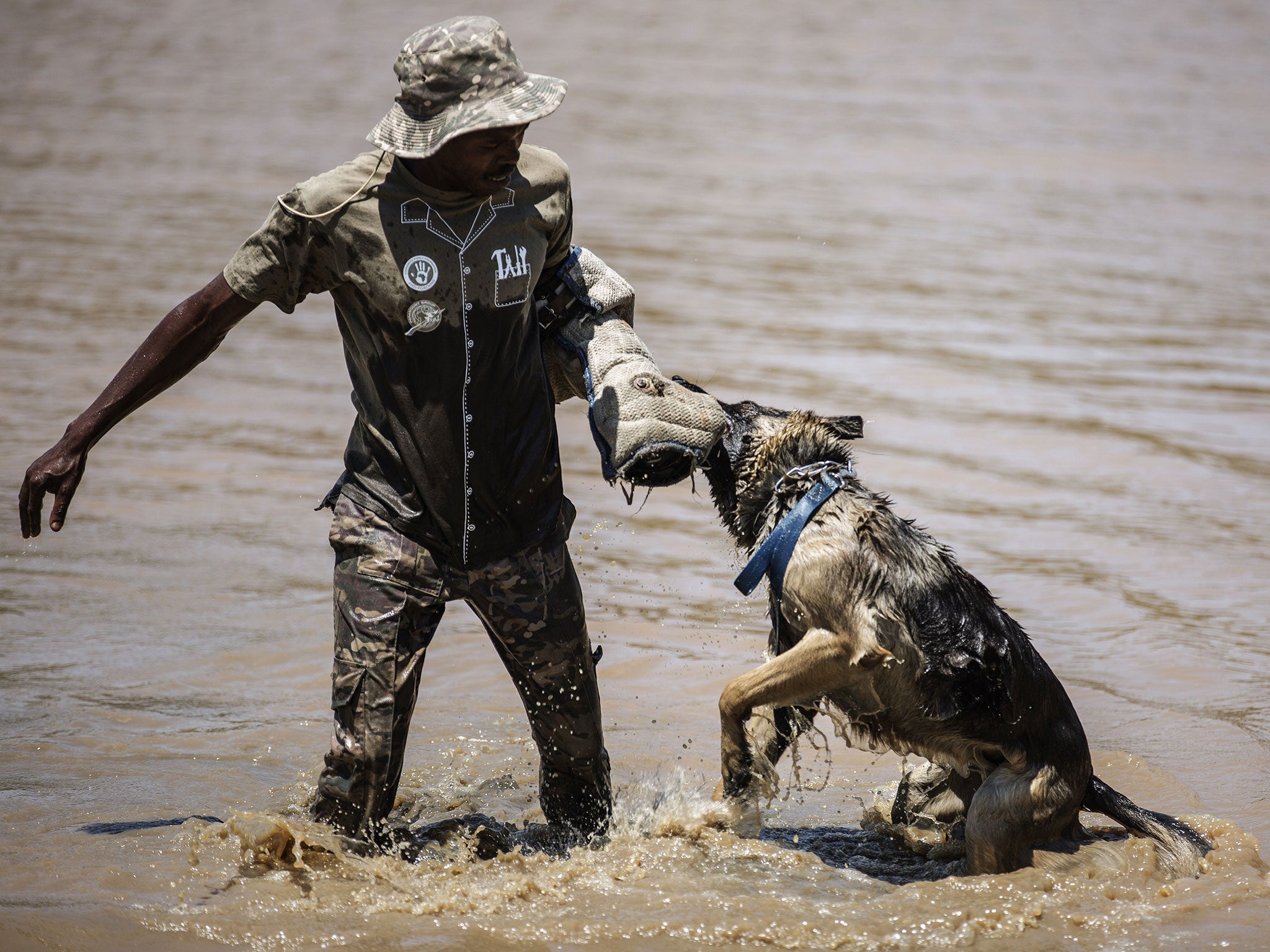Big game hunting: After Cecil the lion, meet the anti-poaching team protecting endangered black rhinos
Cecil the lion's death provoked a fierce debate about how best to save endangered species.Andrew Johnson joins a team in South Africa who are tracking and tagging black rhinos – and hears their surprising views on the merits of hunting

Your support helps us to tell the story
From reproductive rights to climate change to Big Tech, The Independent is on the ground when the story is developing. Whether it's investigating the financials of Elon Musk's pro-Trump PAC or producing our latest documentary, 'The A Word', which shines a light on the American women fighting for reproductive rights, we know how important it is to parse out the facts from the messaging.
At such a critical moment in US history, we need reporters on the ground. Your donation allows us to keep sending journalists to speak to both sides of the story.
The Independent is trusted by Americans across the entire political spectrum. And unlike many other quality news outlets, we choose not to lock Americans out of our reporting and analysis with paywalls. We believe quality journalism should be available to everyone, paid for by those who can afford it.
Your support makes all the difference.Mike Toft is an excellent marksman. Leaning out of a tiny white chopper as it hovers perilously close to the tree tops in the South African bush, he has his sights on the behind of a black rhino, one of the most critically endangered animals in the world.
The vet gets his shot away as the rhino charges through the trees and scrub. In a clearing, where game wardens and gun-toting members of the anti-poaching unit are waiting, the crackle over the radio is that it’s a bull’s eye. The chopper emits a high pitched whine to herd the animal to an accessible spot in the four or five minutes before the cocktail of drugs shot into its backside knocks it out.
“With black rhino anything can happen, they can end up upside down, in a river – they do their damnedest to make it as difficult as possible for us,” says Toft. “Black rhino capture is organised chaos. They are an exceptionally difficult animal to immobilise.”
The rhino – they don’t have names – collapses in a perfect position, on an incline with its head elevated.
But there is a problem. It has a three-year-old calf which won’t leave its mother. A baby rhino is still a formidable beast, so that needs to be knocked out as well. The calf is quickly darted, but at the last minute wanders off, to fall 200 yards away – facing downhill.
Knocking out a rhino is a risky business.
It is not yet 8am and although it’s winter, the African sky is a clear blue. By midday it will feel like a good English summer’s day. The exertion of fleeing the helicopter will have increased the rhino’s body temperature, making it harder for it to breathe. Its respiratory system is already depressed by the drug and facing down means the internal organs push forward, putting more pressure on the lungs. “Pointing downhill is a sure fire way to lose a rhino,” says Toft.
The calf will need hauling around by a rope tied to its legs but this will split the team – and Toft – between the two animals. Losing a black rhino would be a disaster. There are only around 5,000 left, with an undisclosed number of those here on the Thanda private game reserve in Zululand in east South Africa.
With the price of rhino horn, gram for gram, twice that of gold in places such as China, where the new wealth has seen demand soar for what is essentially a huge finger nail, they are a big pay day for poachers.
“One of the biggest things rhino horn is used for now is as a blood purifier,” explains Toft. “If you’re out and it’s a big business corporate thing and you want to impress your business partners, give them a blood purifying shot at the end of the evening; you snort it or drink it, and you don’t get a hangover in the morning. Of course it’s bullshit. It’s all about impressing your mates.”
Earlier this month, a 22-year-old poacher from Mozambique was shot dead on a neighbouring reserve. They have semi-automatic assault rifles, as do the anti-poaching team. If they come across each other, whoever picks their weapon up first is likely to be the one to get away.
“It is a human tragedy as well,” says Thanda’s reserve manager, Warren Beets. “People who have nothing want to put food on the table.”
This is the front line in the battle to save some of the world’s most magnificent animals. But conservation is a fraught and complex issue and the tactics can leave some of us cold. The death of Cecil the lion, for example, has thrown trophy hunting into the international spotlight. Of course, it is revolting to see a beautiful animal shot in its prime to satisfy the vanity of a rich Westerner. Here, however, the wardens, and Toft, are convinced hunting has a role to play.
The reserves are finite, meaning the wildlife has to be managed. Too many lions, and wave goodbye to your zebras. Elephants destroy everything in their vicinity. Whereas once they could wander hundreds of miles, now they are penned in. So they have to be limited to one per thousand hectares.
The dream is to link Africa’s reserves with animal corridors, but that is decades away.
White rhino hunting, says Toft, is legal in South Africa but there is a “hoohah” whenever it happens.
“Rhino are shot every year,” he says. “All these old bulls at the end of the breeding line, they have nowhere to go. The option is to leave them to die naturally which is starvation or fighting to death – or get some money back and put it back into the reserves.”
Poaching works a lot like the drug trade. The small guys take the risks, while organised criminals are pulling the strings and growing rich.
This mother rhino was shot by poachers in 2012. Fortunately the bullet missed its small brain and is thought to have lodged somewhere in the skull. “The worst shots are chest and gut shots because they grow septic and the animals die,” says Toft. “But head shots, if they miss the brain they’ll generally survive – and hopefully mess up the poacher.”
Beets explains that the rhino needs to be darted for several reasons. Principally she needs to have a radio transmitter fitted inside her horn, so her movements can be tracked. A DNA and blood sample will also be taken – the DNA to help identify any rhino horn that turns up in China.
“They don’t even bother killing them anymore,” says Toft. “If they dart the rhino then there’s no gunshot. They just hack the horn out and leave the animal to die.”

As the calf is down, the team will also notch its ears – cut a unique triangular shape from the soft outer lobe – which will enable trackers to recognise it from a distance in the future.
As the word comes in that the mother rhino – who is thought to be expecting another calf – is secure, the rest of the team race through the bush from the clearing. With an APU man at the front and back of the single file column, it’s a five minute jog to where the animal is lying, one back foot splayed out. It is not completely out – every now and then it grumbles like a bulldog and shakes its head – so it has a hood placed over its eyes to stop it becoming alarmed.
As its feet are measured and the samples taken, one volunteer keeps it cool by pouring water on its back as Mariana Verner, wildlife operations co-ordinator, and Letishia Kleinschmidt, habitat management coordinator, get to work drilling into the horn. It is a hard task. A round hole about half an inch in diameter has to be drilled into the base of the horn for the body of the transmitter, and then a diagonal narrow tunnel from the top of the horn to meet it. Once it is installed, it is gummed up with resin. The horn shavings alone are worth $6,000. These will be burned.
For Toft, this is a waste of money. His argument – much like that for legalising drugs – is that the demand will never abate, and all the complete ban does is put a lucrative business in the hands of organised criminals.
Judicious harvesting of rhino horns, without killing the animals, would bring in the income needed to keep reserves like Thanda open. Its 14,000 hectares (54 square miles) is home to lions, zebras, giraffes, elephants, leopards, as well as smaller animals such as hyenas and kudu, a type of antelope. Poaching isn’t just for the lucrative rhino horn or elephant tusk. There is also poaching for the pot and the cost of security is huge.
“The horn is worth $60,000 dollars a kilo,” says Toft. “If we could sell these shavings it would pay for all of our interventions. There are pros and there are cons to legalising the horn trade. But I do believe personally there are more pros. Right now rhinos are worth 100 times more dead than they are alive. We need to turn that around.”

The rhinos will be angry and hung over when they wake, so we move to a safe distance while Toft makes sure they are okay by watching from a tree top. Mother and calf will find each other within an hour.
He explains that the horn grows like a finger nail, and could be harvested every three or four years. It would bring the price down. Opponents say this would only drive up demand, however.
“What is the biggest driver behind rhino horn?” Toft counters. “It’s all about status. If you lower the status, everyone can have a little rhino horn, then the status disappears.”
“It also channels the cash flow from the bad guys,” adds Warren. “And you can have the cash flow going through a proper structure.”
Join our commenting forum
Join thought-provoking conversations, follow other Independent readers and see their replies
Comments